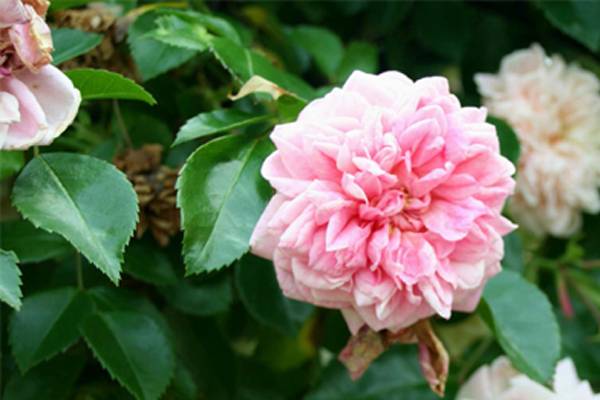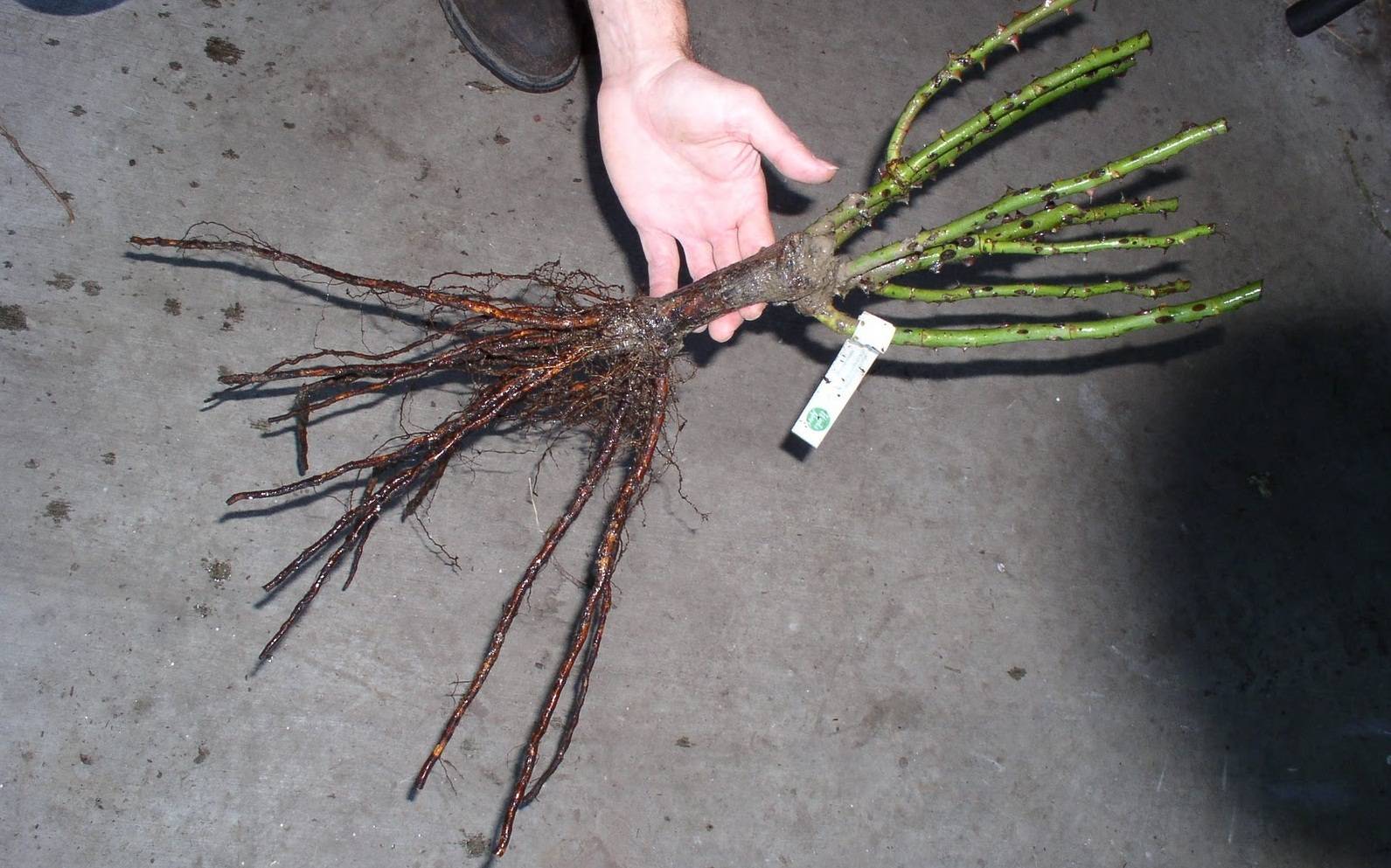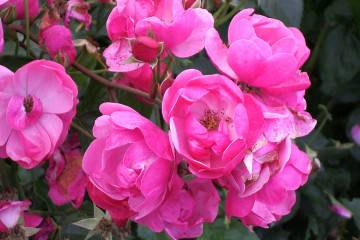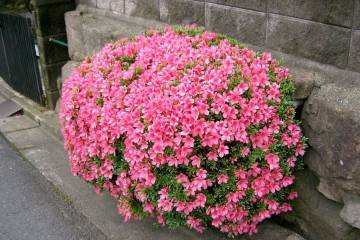Rose Aspirin
The sparkling white flowers of the Aspirin rose look spectacular against the background of bright green foliage. In the heart of each fully ripe flower, yellow stamens appear. If it blooms in a shaded area of the garden, the base of the petals turns pale pink.
The height of the bushes is from 50 to 80 cm. As they grow, the rose bushes get stronger, grow in height and width. Summer residents use the Aspirin variety as a hedge, decorate borders, terraces and balconies with them. For the winter, roses of this variety are not dug out of the soil. A light shelter is enough for them to survive the winter.
Description of the main characteristics
This variety is not very picky about soil and weather conditions. It feels great both in shady areas of the garden and in the sun-drenched areas. The ideal soil is loose soil, rich in nutrients and humus. But if it turns out to be clay, loamy or slightly calcareous, this will not stop the development of the Aspirin rose. It will still bloom to the delight of the owners.
The plant got its name in honor of the centenary of the medicine of the same name. Bayer chose this flower for a number of reasons:
- resistance to temperature shocks;
- small flowers of a shining white color appear almost simultaneously in huge numbers;
- the ability to resist infectious diseases such as powdery mildew and black mold;
- unpretentiousness.
The variety was bred in 1989 in Germany by the famous breeder G. Yu. Evers. The Aspirin rose is created by crossing the Fairy rose with an unnamed variety, which is referred to as PT 83-350.
Aspirin Rose flowers are smaller than other floribundas, about 4 cm in diameter. Each flower has about 40 petals and a very delicate aroma that is hardly felt.
Aspirin rose belongs to the class of ground cover roses. Landscape designers consider the plant to be unique, capable of meeting all expectations. This variety is preferred by lovers of miniature flowers, admirers of abundantly flowering floribundas and fans of compact scrubs. Thanks to its versatile parameters, Aspirin fits into any relief compositions: from small gardens to large landscapes.
Planting and leaving
If the Aspirin rose rose is purchased in the form of a rooted cutting, the florist, having decided on the planting site, must dig a hole, the diameter of which exceeds, and the depth corresponds to the parameters of the container.
Before planting, the roots of the seedling are first soaked in warm water for 2-3 hours. The dug soil is mixed with rotted compost, cow humus or other substrate rich in humus.
Having distributed the root system of the plant inside the hole, it is covered with earth, after which the planting site is watered from a garden hose so that the roots are saturated with water. In place of the washed soil, a new one is poured. The upper layer of the earth is not trampled.
The best time of the year for planting Aspirin roses is autumn and spring. Growing a rose is not difficult. Experienced gardeners note that Aspirin blooms best in places illuminated by sunlight for at least 8 hours a day. The ideal place for planting roses of this variety should be abundant in humus and well ventilated.
Roses are fed 4 times: at the end of April, in mid-May, after the formation of buds and during the flowering period. The first consists of ammonium nitrate, potassium salt (15 g for each bush) and superphosphate (20 g for each bush).
The second top dressing is organic. It contains infusion of mullein (1:10) or chicken droppings (1:20). A bucket of fertilizer is poured under each bush.
For the third time, the bushes are fed with calcium nitrate diluted with water (1 tablespoon per 10 liters) and mixed with organic fertilizers. During the flowering period, a mixture of ammonium nitrate (15 g), potassium sulfate (30 g), magnesium sulfate (10 g), diluted in water (10 l), is poured under each bush.
With the onset of autumn, the petals fall off long before the onset of the wilting period, due to which the plant always has a well-groomed appearance. Floribunda rose Aspirin tolerates winter well. It does not need to be dug up for the winter and transplanted to another place in the spring. It is enough to sprinkle the root system with earth, and cover the top of the rose bush with spruce branches.
If it becomes necessary to transplant a rose to another place, the lower branches of the plant are cut off, and the upper ones are shortened. The plant does not need annual pruning. Experienced gardeners rejuvenate adult bushes once every 3-5 years by removing old branches.
The flowering period begins in early spring and lasts until late autumn. If Aspirin does not bloom, it may be watered incorrectly. By watering rose bushes from a hose from top to bottom, an inexperienced gardener creates conditions for the development of a fungal infection. The cause of the disease is high humidity in the area of the deciduous part of the plant.
Reproduction
Experienced gardeners are advised to propagate the plant by cuttings. A rose grown from a cutting is freed from the growth of wild growth, and in the event of the death of the aerial part, young shoots are formed from the root collar, replacing the dead ones.
In autumn, lignified shoots are cut off and, having freed them from foliage, stored at negative temperatures in a mossy-sandy-peat mixture. In the spring, shoots that have survived the winter are cut into 10-20 cm cuttings. Make sure that the angle of the lower cut is close to 45 °. The top cut should be straight. It is desirable that both ends of the cutting are separated by 3-4 cm from the nearest bud. All intermediate buds are broken off. Planting lignified cuttings is planned for late April - early May.
Roses of this variety are not afraid of diseases and pests. With improper care, the plant can be affected by powdery mildew and black spot. you can overcome ailments with the help of fungicides.
In general, this variety is very effective, moderately unusual and undemanding to care for. The main thing is to properly water and cover for the winter, and then Aspirin will bloom all summer.




















